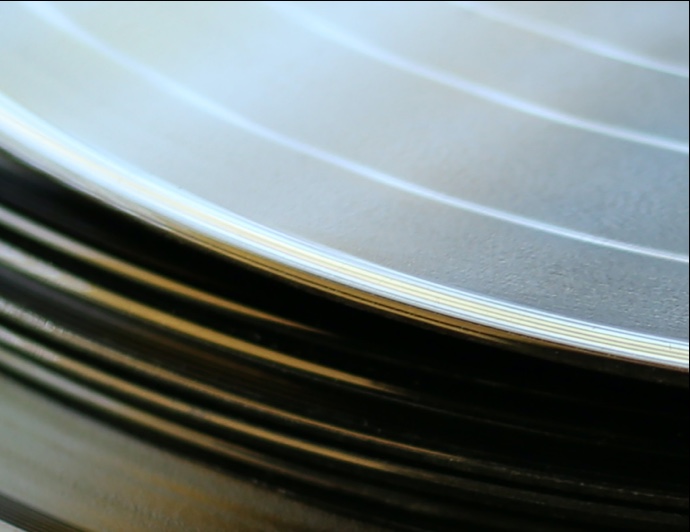While streaming has become the default way of consuming music, for one audiophile only the warm analogue sound of vinyl will do
You know a ‘thing’ has entered the mainstream when it appears as a meme in advertising. The revival of the vinyl LP, and to a lesser extent, the lowly cassette, must be part of the public consciousness because you cannot escape them as devices to indicate ‘cool’: pre-owned watch dealer Watchfinder has used a record deck in its TV ads, more fashion houses than I can list employ LPs as style devices – one insurance company even has a dog listening to vinyl in its commercials.
What this tells music-lovers, especially audiophiles, is that streaming has not vanquished physical media. If there’s an easier analogy to illustrate this, it’s the failure of electronic ‘readers’ like Kindle to vanquish the dead-tree book. Old-school bibliophiles must rejoice on long flights when some Kindle user’s batteries have died with only pages to go. All a traditional book requires is light by which to read.
What streaming and downloads promised was not freedom from electricity – all music reproduction systems except for player-pianos require power – but the death of shelf-filling libraries. Over the decades, physical media has comprised, in order: Edison cylinders, 78s, open-reel tape, vinyl LPs and singles, cassettes and ultimately, Compact Disc. The problem?
All take up space.



“Digital processing hacks music into bits and reassembles it”
Non-physical delivery in the form of downloads and real-time streaming freed music lovers from any need for a disc or tape. Spotify, iTunes, Amazon Prime, and the like enabled access to literally tens of millions of tracks at the touch of a smartphone, the click of a mouse or a tap on a remote control. What they never promised was sound quality to make your heart soar.
There are two user-psychology issues here, the first of which is easy to dismiss. On one hand there is the attitude ending with Baby Boomers, that of possessing a library you can see and touch. On the other is the virtual library which exists in the ‘cloud’ – the cyber collection. Whether you’re a Boomer, a Gen X-er, a Millennial or of another age group, either you appreciate something physical to handle, with liner notes to absorb and a ritual to perform before playing, or you want an effortless, instantaneous, clutter-free life.
What appears to have transpired is that the former – the users of LPs, CDs and cassettes – are not embracing cyber-music, and not because of techno-fear, but because of experience and familiarity. Paradoxically, those who have known only on streaming and downloads are providing most of the converts to vinyl and cassettes.

Indeed, oldsters are rediscovering the vinyl they stored in the basement or loft, or regretting dumping them for CDs. Nostalgia may play a part, too, as one replaces a well-worn copy of the Stooges’ Fun House with a pristine, remastered copy. But for those born after the LP and cassette were declared dead and CD dominated the market, the appeal of LPs (and to a lesser extent cassettes) is based on the novelty value of something to hold, or perhaps an appreciation of sleeve art.
But then there’s the sound. Nobody is championing the reborn cassette for its sonic merit, as this most unreliable of music delivery systems never matched open-reel tape, CD or LP unless one made one’s own recordings on top-quality tape, via a hideously-expensive cassette deck. The cassette’s re-emergence is entirely due to its role in the hugely-successful Guardians Of The Galaxy films, while a handful of deliberately contrary musicians have issued new releases on cassette just to seem hip.
LPs, on the other hand, sound great on sub-£300 record decks, are readily-available in charity shops (used condition-variable), and exhibit all of the sonic qualities even the most obsessive of audiophiles demands. Arguably the only thing better is open-reel tape, but that is a format with little or no contemporary support, so it exists in the same niche as running a pre-war Bugatti or a
Sopwith Camel.

Why does vinyl sound better? The most obvious explanation is that the LP, like music itself, is pure analogue. What all digital playback systems, including CD, streaming and downloading, do to the original recording is what a jigsaw puzzle does to a picture. No matter how fine the pieces, it cannot be a perfect nor even a near-perfect facsimile of the original. Same for music: digital processing hacks music into bits and reassembles it, adding its own unpleasant sonic artefacts.
That’s not to say all digital sucks, and the best CDs and SACDs sound marvellous, but it takes more work, for fewer rewards, than the venerable LP – soon to reach its 75th birthday.
Decent turntables can cost as little as £150, brand-new LPs retail for under £15, used vinyl for 50p an album, and the selection is vast. All you have to do is play them side-by-side with any digital source and you’ll understand that one sounds like pleasant noise.
The other? Like real music.
Words: Ken Kessler

Sign up to Loupe magazine
Loupe is Christopher Ward’s quarterly in-house magazine. If you want to know what’s happening at CW (and you love great journalism), this is where to start. Alternatively, you can read all our back issues on your computer, tablet or phone.
Order your free copyRead Loupe online

